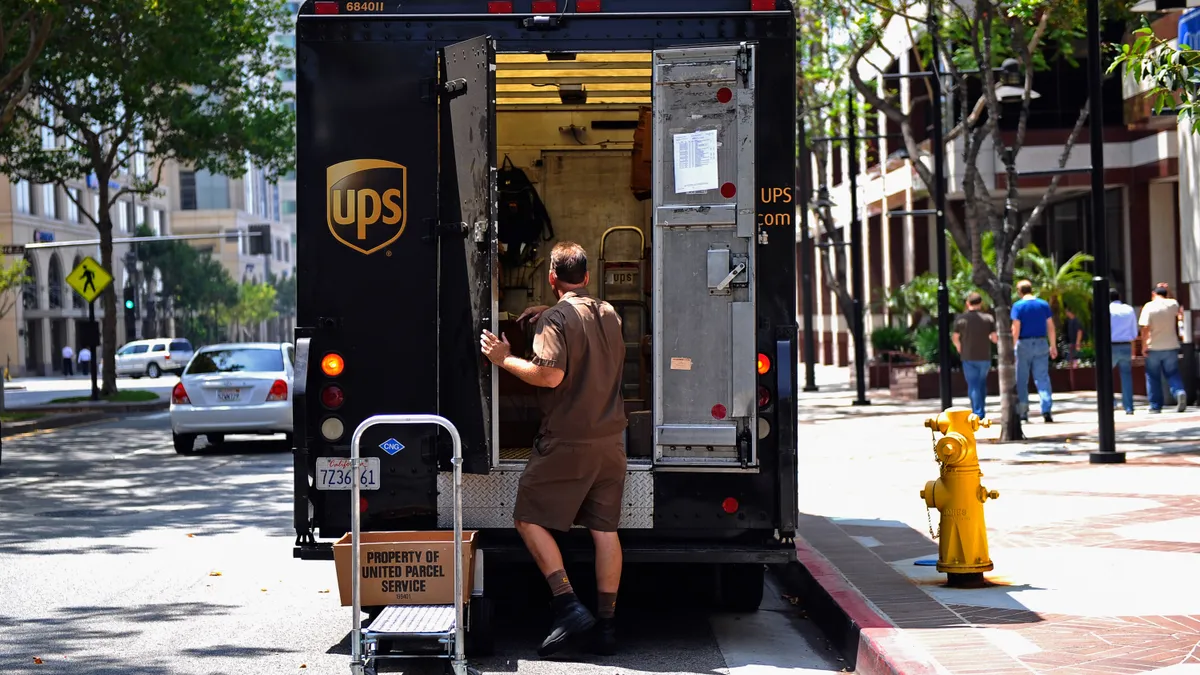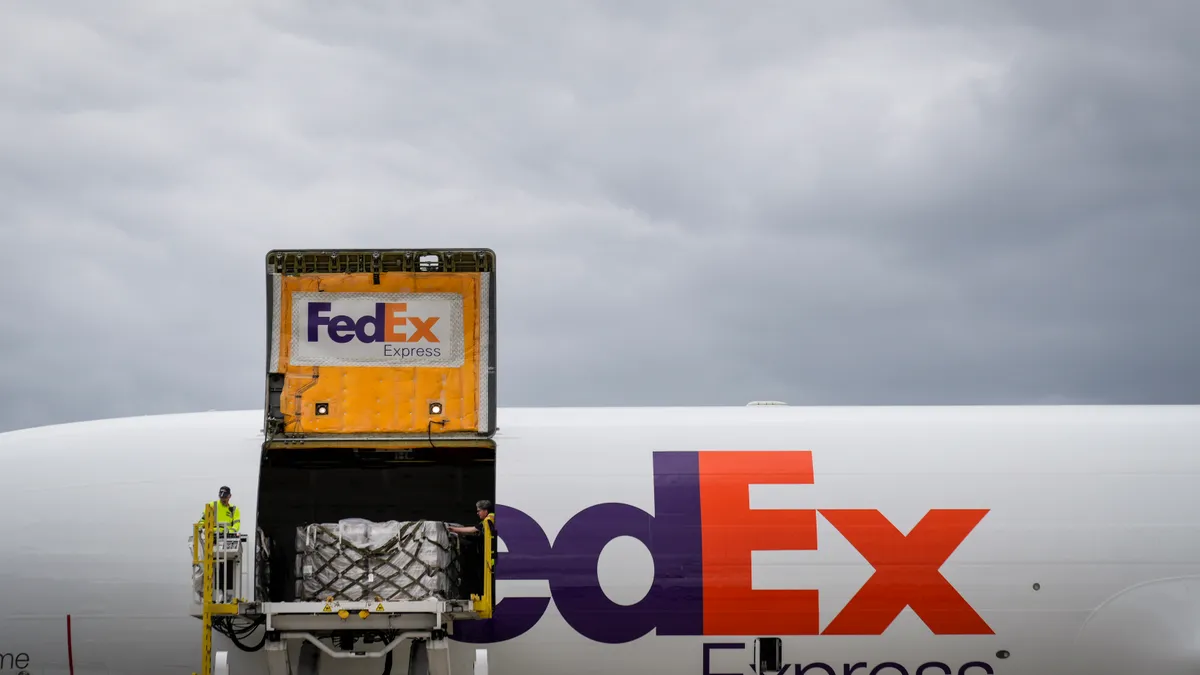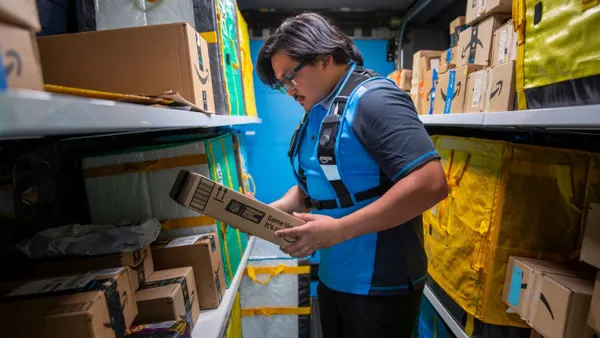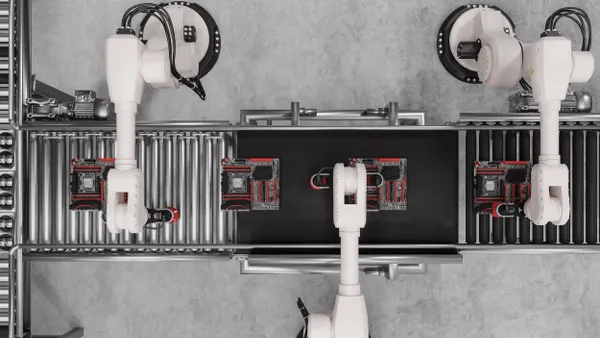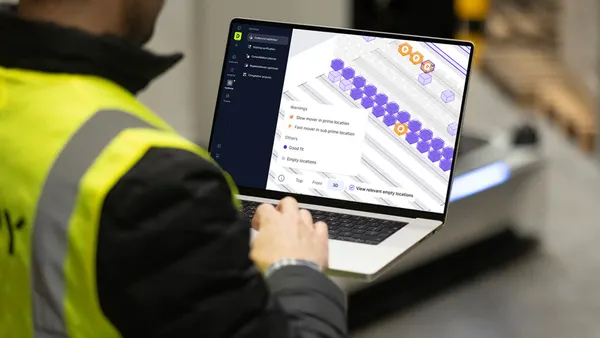Dive Brief:
- Legislation just passed in San Francisco now limits robotics delivery companies to just three street-active robots each, for a citywide total of nine robots, Tech Crunch reported last week. The robots can be active only in low population, mostly industrial areas.
- Active robots now also require constant human monitoring, plus a top speed of only three miles per hour. Those behind the new laws mention potential danger to pedestrians such as children and the elderly, who could be forced off the sidewalk and into the street due to robotic crowding.
- The San Francisco limitations are at odds with those recently passed in both Idaho and Virginia, which now allow delivery robots to operate statewide.
Dive Insight:
Legislation and technology seldom move at the same pace, which can pose difficulties for innovators within the supply chain.
In the case of U.S. drones, both privacy laws and weight limits have led to legislation inhibiting widespread adoption, while when it comes to automated vehicles, hard-won legal acknowledgement has finally led to progress, as evidenced by the American Vision for Safer Transportation Through Advancement of Revolutionary Technologies (AV START) Act.
Human nature seems to determine our innate discomfort with new technology, which in turn leads to slow adoption.
"When regulators, organizations or even the general public are faced with something they’ve never dealt with before (cargo bots, for example), they want to approach it cautiously," said Matt McLelland, innovation research manager at Kenco Innovation Labs.
"Often when people don’t understand innovative technologies (whether it’s automation, robotics or driverless cars), their first response is to be fearful of it or shut it down completely – and this is when over-regulation can come into play," McLelland told Supply Chain Dive. "This was true in 2016 when California lawmakers halted Uber’s self-driving car tests in San Francisco, requiring they obtain the right permits. After this failed pilot, Uber resumed testing in Arizona."
In other words, when new technology isn't accepted in one location, it often simply relocates to a more welcome climate. Ultimately, uneven adoption, rather than no adoption at all is the result — the very issue with which automated vehicle makers have been struggling for years.



